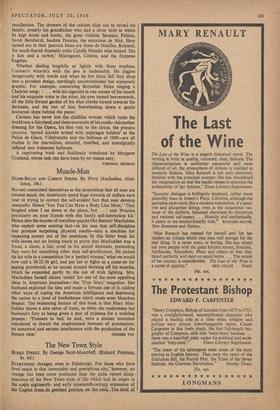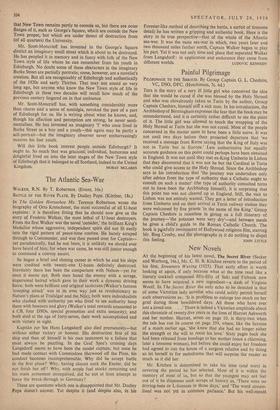that New Town remains partly to console us, but there
are outer flanges of it, such as George's Square, which are outside the New Town proper; but which are under threat of destruction from (of all quarters) the University.
Mr. Scott-Moncrieff has invented in the George's Square district an imaginary small street which is about to be destroyed. He has peopled it in memory and in fancy with folk of the New Town style of life whom he can remember from his youth in Edinburgh. No doubt some of these characters in the imaginary Burke Street are partially portraits; some, however, are a novelist's creation. But all are recognisably of Edinburgh and authentically of the 1920s and early Thirties. That may not sound so very long ago, but anyone who knew the New Town style of life in Edinburgh in these two decades will recall how much of the previous century lingered on in that ambience.
Mr. Scott-Moncrieff has, with something considerably more than charm and a sense of nostalgia, revoked the past of a part of Edinburgh for us. He is writing about what he knows, and, though his affection and perception are strong, he never senti- mentalises. He has invented an imaginary 'I' who once lived in Burke Street as a boy and a youth—this again may be partly a self-portrait—but the imaginary observer never embarrassingly mourns his lost youth.
Will this little book interest people outside Edinburgh? It ought to. So much that was gracious, individual, humorous and delightful lived on into the later stages of the New Town style of Edinburgh that it belonged to all Scotland, indeed to the United



















































 Previous page
Previous page